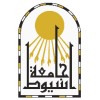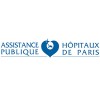
Evaluate the Effectiveness and Safety of DPCP Ointment (Samcyprone™) on the Clearance of Verruca...
Common WartsHPV (Human Papillomavirus)2 moreWarts are benign epidermal tumors caused by human papillomaviruses (HPVs). The active pharmaceutical ingredient DPCP has been used for many years as a compounded formulation in acetone for the treatment of warts, alopecia areata and more recently, cutaneous metastatic melanoma lesions. An improved topical ointment formulation of DPCP called Samcyprone™ will be evaluated for the treatment of common warts.

Efficacy of Cryotherapy Combined With Intralesional Tuberculin PPD Versus Intralesional Tuberculin...
Common WartThe investigate the efficacy and safety of combined 'cryo-immuno-therapy' versus intralesional tuberculin purified protein derivative (PPD) antigen immunotherapy alone for multiple common warts

Photodynamic Therapy in Treatment of Verrucae
Verruca VulgarisTo assess the efficacy (clinically and dermoscopically) and safety of photodynamic therapy using intralesional injection of 4% methylene blue solution as a photosensitizer with IPL versus IPL only in treatment of warts.

Pyruvic Acid Versus Salicylic Acid Preparation in Treatment of Plantar Warts
Plantar WartPlantar warts can be bothersome and painful requiring treatment. The investigators will compare the efficacy of pyruvic acid and salicylic acid in treating multiple plantar warts. Patients with multiple plantar warts will be randomized to receive either pyruvic acid 70% or compound salicylic acid solution (salicylic acid 16.7%, lactic acid 16.7%, and collodion 100%) applying topically twice a day for 4 weeks. Patients will be visited every 2 weeks for one month after starting treatment and then every one month for up to 3 months. The number and size of warts will be evaluated.

Effect of Laser in Treatment of Vulval Warts
Vulval WartVulval warts is a magor problem that affects women .

Intralesional Treatment of Plantar Wart
Plantar WartGroup 1; intralesional injection of bleomycin in plantar wart. Group 2; intralesional injection of 5-fluorouracil in plantar wart

Cervical Intraepithelial Neoplasm (CIN)-Warts Efficacy Trial in Women (Gardasil)(V501-013)(COMPLETED)...
Cervical CancerGenital WartsThe primary purpose of the study is to determine if GARDASIL (V501) with four components is able to prevent cervical cancer, cervical dysplasia, including Cervical Intraepithelial Neoplasia (CIN)(Any Grade) and Adenocarcinoma In Situ (AIS), and genital warts.

Conventional Photodynamic Therapy vs. Painless Photodynamic Therapy for Small Genital Warts
Genital WartsThis study is being done to compare a new, continuous illumination and short Incubation time regimen of aminolevulinic acid photodynamic therapy(ALA-PDT) to a conventional regimen for treatment of small genital warts. The hypothesis is that the continuous illumination approach will be less or even no painful, but equally efficacious, as the old regimen.

Comparison Between Tuberculin Vaccine and Cryotherapy in Genital Wart Patients
Genital WartCutaneous and genital warts are common dermatological conditions caused by Human Papilloma Virus. Although it is a benign condition it causes disfigurement, has tendency to collect, can be transmitted to others, this makes adequate and timely treatment important, while many warts are resolve spontaneously over several years, most patients seek treatment because the warts are unsightly and often tender or painful.

Efficacy of Quadrivalent HPV Vaccine to Prevent Relapses of Genital Warts After Initial Therapeutic...
Genital WartsExternal genital warts (EGW) are a frequent disease (typical yearly incidence of 100 to 200 new cases per 100.000 person-years, typical prevalence of 1 to 4% of the sexually active population), with a heavy toll on patients' quality of life: low self-esteem and severe impairment of sexual well-being are common consequences. Treatments are painful and take time to achieve cure because of low complete remission (20 to 60%) and high recurrence rates (10 to 40%, 30% on average). Finding new means to reduce these recurrence rates thus seems justified. Infection with Human Papillomavirus (HPV) is responsible for EGW,other warts and some epithelial cancers. Out of two currently available HPV vaccines (Cervarix and Gardasil®), only Gardasil® is " quadrivalent " i.e. contains virus like particles imparting protection versus 4 genotypes of HPV, 2 of them responsible of most cancers and pre cancers of the cervix (HPV 16 and 18), and 2 for 90% of EGW (HPV 6 and 11). A close to 100 % efficacy of the quadrivalent HPV vaccine (QHV) on prevention of EGW in naive patients has been shown, leading to their near disappearance in the vaccinated population of countries with a good vaccine coverage. Beside this preventive efficacy, literature data also show that HPV vaccines have an up-to-100% protective effect versus recurrence of destroyed precancerous lesions of the cervix in non-naive patients with an up-to-40 month's follow-up. Also, there is anecdotal evidence that they could help treat severe wart conditions. QHV is also safe and well tolerated when used in a preventive manner. Investigator hypothesis is that QHV could have a protective effect on the recurrence of EGW in patients who achieve complete remission. The primary objective is to evaluate if the HPV vaccine, as compared to placebo, reduces the relapse rate of external genital warts over a 12 month-period after their first injection. The primary endpoint is the Relapse-free "survival". Relapse will have to be clinically confirmed. The secondary objectives are : 1. To assess the improvement of the quality of life of the patients 2. To investigate the clinical tolerance to three doses of HPV vaccine. The secondary endpoints are Disease relief score as evaluated by patients on a specific questionnaire for Condylomata Acuminata (CECA) and Dermatology Life Quality Index (DLQI) self-administered questionnaires over the treatment and follow-up periods The clinical tolerance to HPV vaccine will be evaluated by assessment of the percentage of patients with local and/or systemic reactions during the study This is a National multicenter Phase III comparative, double blind randomized, two-parallel groups clinical trial evaluating the efficacy of Gardasil vaccine versus placebo in EGW population. Patients (300) recently cured of EGW will be enrolled over a 18 month-period and will be randomized in a 1:1 ratio to receive three intra muscular (IM) vaccinations of either Gardasil vaccine (150 subjects) or placebo (150 subjects) : Group 1: Gardasil (at M0) + Gardasil (at M2) + Gardasil (at M6) Group 2: Placebo (at M0) + Placebo (at M2) + Placebo (at M6) Subjects meeting all the inclusion criteria and none of the exclusion criteria will be vaccinated by the investigator or designee of the investigational center and will be examined by the investigator or designee 30 minutes post immunization to assess for local and systemic reactions. All subjects will be followed by the investigators or designee during the study by phone contacts and visits on site. Diary cards will be used after each vaccination to follow the patients. Number of visits /participant: 9 Schedule of visits : 1 selection visit (V0) , 3 vaccinations scheduled on site at M0, M2 and M6, 3 phone contacts at M1, M3 and M7, 2 clinical follow up visits on site at M9 and M12 + 1 unscheduled visit on site in case of EGW relapse during the study
